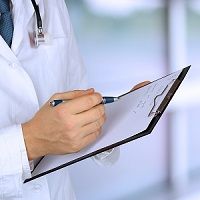News
Article
Eculizumab Biosimilar Comparable for Complement-Inhibitor Naive Patients with Paroxysmal Nocturnal Hemoglobinuria
Author(s):
These results in the subgroup analysis, seen among individuals who were both identified as Asian and non-Asian, align with data published previously in the overall population.

The eculizumab biosimilar known as SB12 showed similar effectiveness to eculizumab (ECU) in individuals with paroxysmal nocturnal hemoglobinuria (PNH) that had not been given complement inhibitors, according to new findings, regardless of Asian or non-Asian subgroup.1
These results and more were the product of a recent subgroup analysis of the pivotal SB12 phase 3 findings that suggested ECU and the monoclonal antibody SB12 have similar clinical efficacy among those with diagnoses of PNH.2
The new analysis sought to assess the biosimilar’s effectiveness in treating both Asian and non-Asian subjects with PNH that had been involved in the prior phase 3 research. The new subgroup analysis was led by Jun Ho Jang, MD, PhD, from the Department of Internal Medicine Division of Hematology-Oncology at Samsung Medical Center in Seoul, Korea.
“The pivotal SB12 Phase III study demonstrated equivalent clinical efficacy by evaluating lactate dehydrogenase (LDH) and comparable safety, pharmacokinetics, pharmacodynamics, and immunogenicity between SB12 and ECU in patients with paroxysmal nocturnal hemoglobinuria (PNH),” Jang and colleagues wrote.
Background and Findings
The investigators looked at the results of 50 adult study participants who had been diagnosed with PNH, with the participants having LDH levels about ≥ 1.5 times the upper limit of normal (ULN). These individuals, with no prior exposure to a complement inhibitor, were randomized 1:1 by the research team.
They had been given a dose of 600 mg of SB12 or given ECU intravenously each week for the first 4 weeks, and this was later followed by a 900 mg dose by the fifth week and then the same for every 2 weeks thereafter. By the 26th week, these subjects were switched up until the 50th week.
The investigators determined their primary endpoints to be LDH levels at the 26-week mark as well as the time-adjusted area under the effect curve (AUEC) of participants’ LDH from the point of 14 - 26 weeks and 40 - 52 weeks.
The research team would declare equivalence if the 95% confidence interval (CI) of the mean difference in participants’ levels of LDH at the 26-week mark was shown to be within [−1.2 × ULN, 1.2 × ULN]. They also determined equivalence for time-adjusted AUEC if the 90% CI of the reported geometric mean ratio was shown to be within [0.77, 1.29].
As far as secondary endpoints are concerned, the team looked at subjects’ LDH profiles over the course of time, using a post-hoc assessment for efficacy endpoints in Asian and Non-Asian individuals.
Among the 50-participant group, 54.0% of these individuals were noted by the investigators as being Asian. Within the randomized groups, the research team assigned 60% of Asian participants and 40% of Non-Asian ones to TS1, but 48% of Asian and 52% of non-Asian participants were placed in TS2.
Notably, the team found that baseline demographic data as well as characteristics of participants’ disease were shown to be comparable between the 2 distinct treatment sequences, with the team finding no major racial differences.
The 95% CIs for the mean difference in LDH level at the 26-week mark between SB12 and ECU were found by the investigators to be within predefined equivalence margins for both the subjects labeled as Asian and those in the subgroup labeled as non-Asian patients.
Furthermore, the investigators noted that the 90% CIs for the ratio of time-adjusted AUEC of subjects’ LDH between SB12 and ECU were found to have been within the pre-defined equivalence margin for both of the subgroups.
The LDH profiles throughout the course of the investigators’ study period were also reported to be comparable between both subgroups. None of them were found to have anti-drug antibodies and none discontinued as a result of lack of efficacy.
“While the limited sample size suggests for caution, the comparable efficacy results by Asian and Non-Asian subgroups are also comparable to previously published results in the overall population, with no significant differences identified,” they wrote.
References
- Jun Ho Jang, Soo Min Lim, et al. Efficacy of SB12 (Eculizumab Biosimilar) in Asian and Non-Asian Patients with Paroxysmal Nocturnal Hemoglobinuria: Subgroup Analysis of a Global Phase III Randomized Controlled Trial, Blood, Volume 142, Supplement 1, 2023,
Page 2727, ISSN 0006-4971. https://doi.org/10.1182/blood-2023-191275. - Jang JH, Gomez RD, Bumbea H, et al. A phase III, randomised, double-blind, multi-national clinical trial comparing SB12 (proposed eculizumab biosimilar) and reference eculizumab in patients with paroxysmal nocturnal haemoglobinuria. EJHaem. 2022;4(1):26-36. Published 2022 Dec 20. doi:10.1002/jha2.632.





